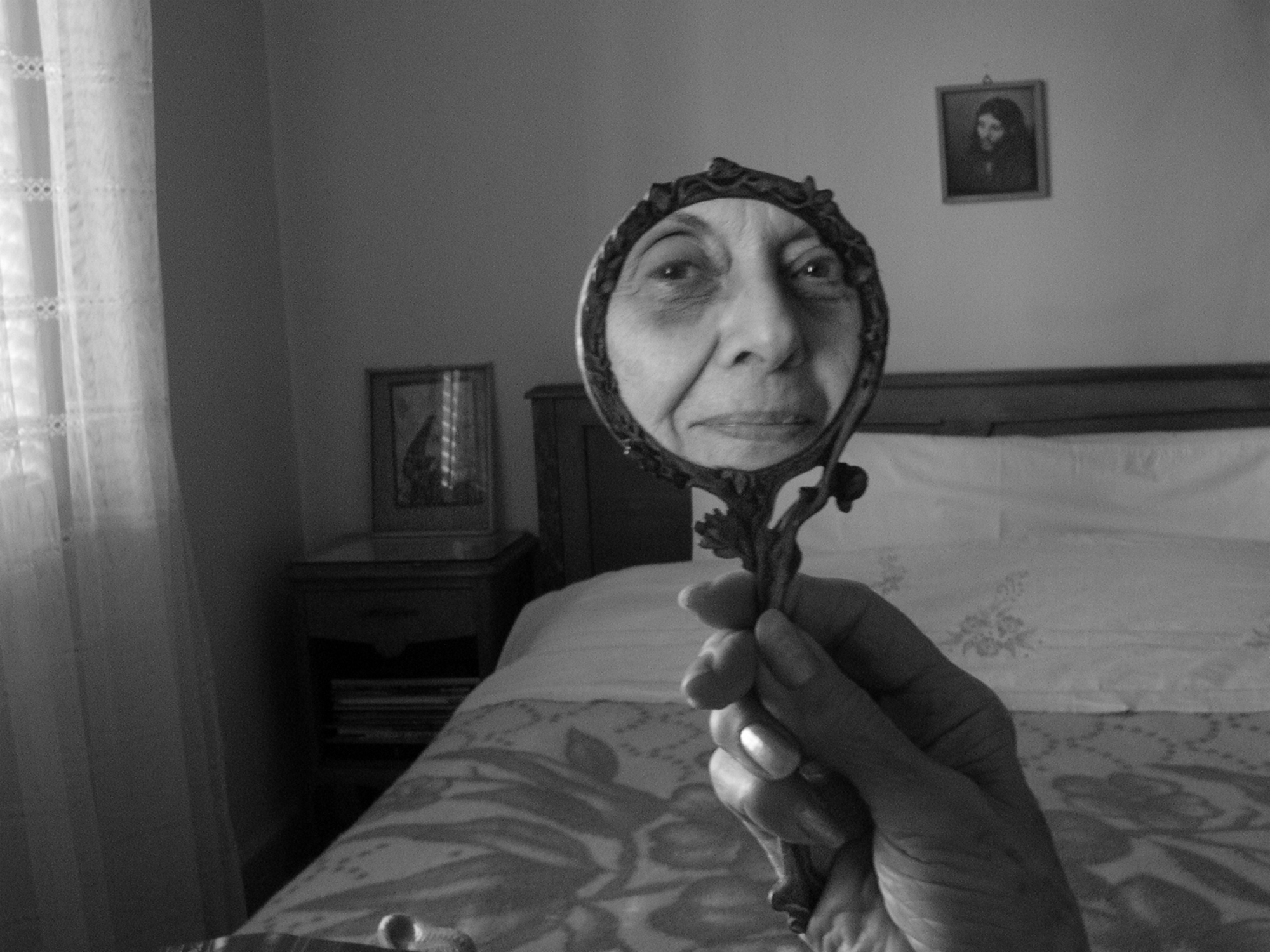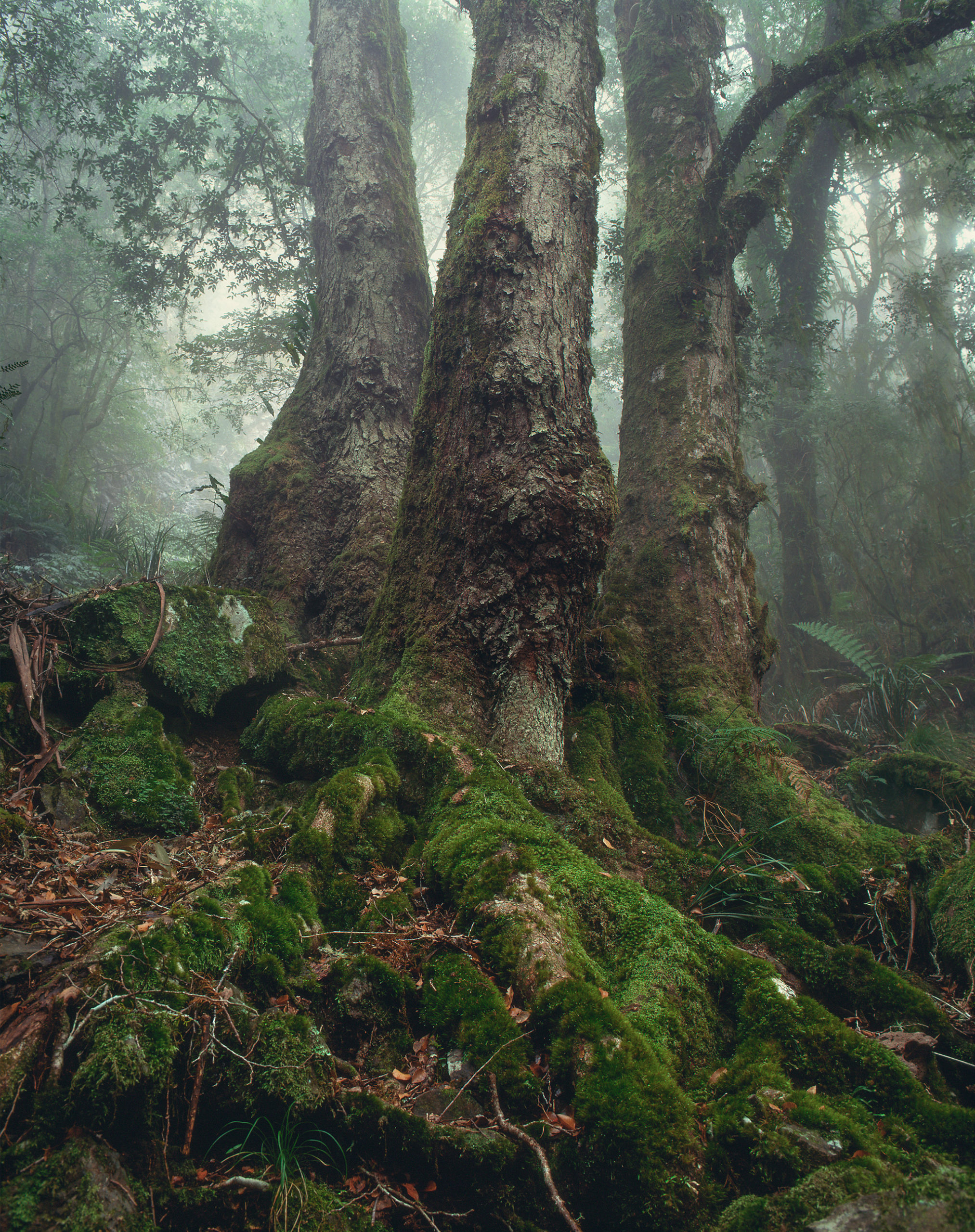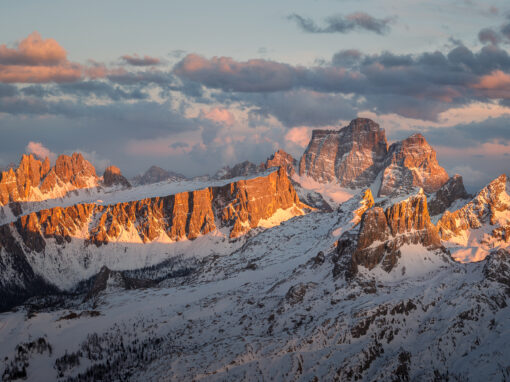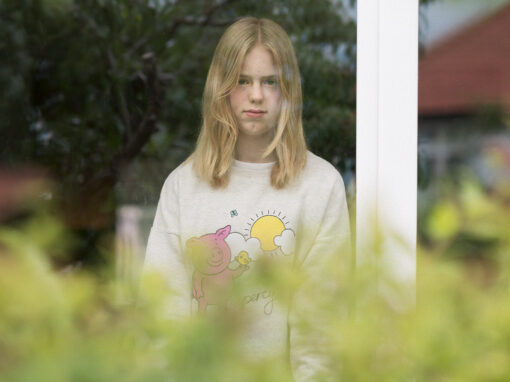If anyone starts to worry about this being another boring article identical to the multitude of others that you have read about composition, aperture, shutter speed, and all the other technical elements that go into making a picture successful, please bear with me. It is not. Those of us who have a small place in photography publishing see an almost uncountable number of images every week. Many of those pictures might do a great job of illustrating the mechanical aspects of the craft, but they do not necessarily resonate or appeal. I am sure that you, just like me, have looked at a technically perfect image, yawned, and thought “Why bother?” on more than one occasion.
Regular readers of this column may remember that I recently railed against some of the trends of modern landscape photography. The landscapes that I discussed in that article were ones that elicited the “Why bother?” response: postcard perfect cliches that provoke no thought or tell us nothing about the world. The ubiquitous photographs of Antelope Canyon were one of my main targets. Before I proceed, a couple of amusing things that happened in the wake of the article are worth noting. First, someone sent me a message telling me that I should check out a group of the best modern landscape photographers and their work. The link the individual sent me was filled with exactly the type of work I had just denounced; it even included the bog-standard Antelope Canyon cliché. Second, I get many an advert for photography courses, sales, and the like appearing on my Facebook feed. Yesterday, it was an advert for a gentleman trying to sell his landscape photography course. Naturally, it led with a picture of Antelope Canyon.
What I want to try and understand by writing this column is why some photographs speak to us, either individually or collectively, and others cause us to walk on by. I believe that this is caused by what I name “connectivity” for want of a better word. I cannot name it simply “narrative” because this would limit us: two of the examples below do not have a conventional narrative as such, but they do have “connectivity”. What I am defining here creates an intangible connection with the image and contains the elements of narrative, political rhetoric, unique beauties, and all those remarkable features that make a photograph transcend the ordinary.
A useful place to start is Dorothea Lange’s famous portrait of Florence Owens Thompson, universally known as Migrant Mother. Almost everyone who has a passing interest in photography will know the picture. The work is universally recognised as a great photograph. It has been painted, appropriated, updated, and parodied. Now, if you are so inclined, head to the Wikipedia page on the photograph. The image is now in the public domain, so you can freely download a large high-quality scan. Have a close look at what is in focus. It is not the subject’s eyes. It is the back of the right-hand child’s head. Lange missed the focus. One of the most iconic images of all time has a monstrous flaw!
However, that is not the point. It does not really matter, does it? Nobody really cares, except perhaps me, but then only for the purposes of writing this article. We look beyond the technical imperfection to the greater meaning of the photograph before us. We empathise with Florence. We want her life and those of her children to be better. We hope things turn out okay for them. Susan Sontag once wrote that “Pathos, in the form of narrative, never wears out.” She was right. There is a universality here that connects every one of us who holds their family dear to Lange’s image.
I hope that Lange’s photograph demonstrates that it is not technical quality that makes a picture special. It is an essence, something more difficult to quantify: the “connectivity” that we have with the picture. Let me demonstrate this by looking at three more photographs. All three are technically excellent, but this is not what makes them special.
Australian landscape photographer Geoff Woods’s Antarctic Beech, New England National Park (see the featured photograph above), is technically excellent, particularly as this was crafted on medium-format film. However, as I noted above, landscapes that tick all the boxes of technique are ubiquitous, so that is not what makes this picture special. Woods’s work is clearly influenced by his friend, the late, great Peter Dombrovskis. Dombrovskis’s work was one of the reasons I took up photography and he is, to my mind, Australia’s greatest landscape photographer. Woods has managed to construct an image of similar power and impact to that of the master. It is a great indication of Woods’s own skills that if I were told that this came from Dombroskis’s portfolio, I would not doubt it for a second.
What is it that makes this photograph so good? The impact of the Fuji Velvia film that it was shot on certainly helps. Velvia is known for rich colours and this picture is no exception. The beautiful and ephemeral mist behind the tree adds a boost as well. However, it is simply how the photograph makes me feel that does it for me. In my mind, I can feel the cool moss as I place my hands upon it. I can smell a cool morning in the forest. The light on the right-hand side hints at the arrival of the sun, and suddenly I am there, back in the glorious Australian wilderness for the first time in twenty years.

Visual artist Hany Tamba takes after his cinematographer, painter and photographer father. He is Lebanese by birth but enjoyed an art school education in the UK before settling in Paris. As a multidisciplined visual artist, photography is only one feature of what he does, but he describes it as an “essential part” of his life.
This picture, taken in 2003 in his mother’s 80th year, is warm and humane. Tamba himself describes his mother’s expression as “benevolent” and he is absolutely right. She radiates kindness. Yet, there is also a hint of mischief in her expression that takes the charm to another level. Lovely as this is, there is much more to the photograph. What elevates this picture to special is that her bedroom provides a perfect context for her reflection. Not only is she reflected in the mirror but also echoed in the room. That room is simply furnished with two discrete Catholic icons on display. The bed and its coverings are spotless. The whole area is just so. The picture creates an atmosphere that gives me a sense of the lady despite having never met her. Now, it is critical that I do not reduce her simply to what I can infer from a single image, but after spending time with this photograph I feel like I know her just a little bit, and she very much seems like somebody I would have liked a great deal.

Our third image for this article is Finnish photographer Ari Jaaksi’s Morning Coffee. As much as this article is not about the technical, what Jaaksi did to make this image is somewhat mind-blowing. The picture was taken on Fuji Instax film, a popular modern take on the Polaroid. Yet rather than being shot using an Instax camera, it was made in a medium format Rolleicord. This allowed him to control the aperture and shutter speed, neither of which are alterable in an Instax camera. Jaaksi removed the film from its cartridge in total darkness and placed it into the Rolleicord. After making the image, he placed the now exposed film back into the cartridge, again in darkness, and then placed the cartridge into an Instax camera. Then he took a shot with the lens cap on so that no double exposure was made, and the developing chemicals were released. This is an extraordinary level of effort, but what a result! This image is completely unique. It cannot be reproduced or remade. It is a one-of-a-kind photograph.
As remarkable as the process is, this is not the reason I have selected the photo for this article. I would love this image without knowing the backstory. This image also illustrates what I mean by “connectivity” most of all. This is because I cannot quite articulate why I like it so much. It gives me a feeling of being there in the room. I can almost reach out and pick up the coffee and the apple and snack away. With the previous two images, I was able to describe the “connectivity”, but here it is elusive. The intangible feeling that this image gives me is what makes it special. There is just something about it. My only regret with this lovely picture is that I cannot hold the original in my hands or look at it framed on a wall.
This article has given me the opportunity to spend some time thinking about, studying, and writing about three outstanding images. I found that each one connects to me in their own individual way. What I hope I have managed to illustrate here is the fact that I feel there is so much more to making fine photography than simply following technical rules and guidelines. To make a photograph genuinely special, there needs to be something more, something extra. I have called it “connectivity”, but you may have a better word or phrase that you use yourself. Either way, each of these three images, like every special picture, has that “connectivity”.
GEOFF WOODS
Geoff’s work regularly appears in the FRAMES Magazine Facebook Group.
ARI JAAKSI
WEBSITE
YOUTUBE
INSTAGRAM





Pasquale Verdicchio
May 11, 2021 at 20:00
would you say that “connectivity” is somewhat related to Roland Barthes’ “punctum”?
Robert Wilson
May 11, 2021 at 20:10
Hi Pasquale,
That’s a really good question! When Barthes talked about the “punctum”, he was referring to things that were accidental (if my memory serves me correctly), but here I am thinking of things that are deliberate as well as accidental.
I must admit that I wasn’t thinking about Barthes when I wrote the piece, but upon reflection I would include his idea of the “punctum” along with the other items that I mentioned that create “connectivity”. After all, if it is something that makes a photograph speak to us, it connects us!
I hope that answers your question!
Cheers,
Rob
Pasquale Verdicchio
May 11, 2021 at 20:19
Thank you, Rob … I agree, the unexpected element that somehow grabs our attention in a photograph and makes it “work” for an individual. I guess that may differ from person to person, so a little askew form a more deliberate approach to “making” the photograph. Thank you, Pasquale
Robert Wilson
May 11, 2021 at 20:20
Absolutely!
Al White
May 12, 2021 at 01:38
Thanks so much for this piece Pasquale. Barthes’ punctum was my first thought as well. I’ve always thought of it as the ability of an image to demand that you give it your attention. It seems that every iconic image has it.
Al White
May 14, 2021 at 17:57
Oops. Should have been “Thanks…Rob…😬
Robert Wilson
May 14, 2021 at 17:58
That’s okay! My pleasure Al!
I am glad you enjoyed it.
Desiree Day
May 12, 2021 at 12:33
Very interesting and informative article Rob. Thank you for your insights.
Robert Wilson
May 12, 2021 at 14:02
You are most welcome!
Lynne
May 12, 2021 at 17:52
Excellent article Rob.
Robert Wilson
May 14, 2021 at 13:51
Thank you Lynne!
Frank Styburski
May 12, 2021 at 20:49
Thank you for the fine article, Robert. I agree that it is not only a photograph’s technical qualities that allow it to connect with us on some emotional level. The connectivity that you describe relies on the package of taste, interests, and experiences that we bring to the image. I have some additional thoughts on the subject.
First, connectivity with an image is not a passive interaction. It begins with the photographer. Something about the subject, form, color, light, situation,- and perhaps a hundred more influences moved him to make an exposure. If he was successful, no additional context is required to supplement the image and connect with him when he views it as a print, or on a monitor. One of the issues that I see when I look at the work of photographers is that their response to their work is sometimes subjective. They know what the appeal was when they made the picture, but they succeeded in the visual process only because they can bring their own package to it.
Similarly, we, as consumers of photography, bring our own package of experiences to the images that we view. I like to use the concept of broadcasting to illustrate my point. The photographer is sending out signals. The images are his transmissions. Our sets are on and the volume is up. We are ready to receive. But we are either tuned to the correct frequency, or we miss it completely.
So, connectivity is a function that requires action on the part of the photographer as well as his audience. Hopefully, there is a sweet spot where the connections that the photographer has made in the print can be shared in the eye of the viewer.
Second, The package of receptivity that we bring to a photograph can be a conditioned one. With over a hundred years of experience, the medium has defined itself over and over again. Today, any single definition of the correct purpose of photography would be incomplete. But I think that it is safe to conclude that for the general public, the role of photography is to document the world and events. In short, it is a craft in the service of another purpose.
This is a notion that I unconditionally reject. However when you consider the reverence that we give to the genres of landscape photography, photojournalism, sports photography, travel photography, and nature photography, -I think that there is enough merit in my assertion to argue for its validity. We only have to look at the way the major camera manufacturers are selling their gear. Typically, they use these types of pictures in their advertising to connect with their market.
They are doing two things:
First they are tapping into interests and emotions we already have, that are unrelated to photography. And second, they are tightly defining what the proper aesthetic for photography should be. In a sense, they are influencing what we should expect to see when we look at a photograph, and narrowing the scope of connectivity that we are willing to use when we encounter a one.
We tend to stop seeing things in a photograph when we think we know what we are looking at. This is an aspect of the defined role of photography as a documentary tool. It is part of the damage that conditioning has done. Conversely, when we see an image that we don’t expect, we have to process the visual information, and decide whether we will be guided by the norms we understand, – or be open to making a judgment on the work’s own terms. We have to “unsell” ourselves on how we look at photographs, and redefine the process, again. Stepping outside of the box requires unexpected intellectual effort we aren’t prepared for. And our conditioning has introduced a deterrent into the process we use to respond to photographs in a positive way.
My third observation is that the connectivity that we have with a photograph can be a mile wide, and an inch deep. What I mean is that an image can have a broad appeal, and at the same time have an aesthetic impact that is inconsequential. Some subjects enjoy universal acceptance. When we see an image of a sunset, or a puppy, our inclination is to click the “Like” button on our social media site. But as a photograph, is there some aspect that transcends the situation and raises its status to something that stands out against the millions of similar images we have seen? The same can be said of images whose connectivity is motivated entirely by their provocative nature.
There are also some images that do not connect to a broad segment of their audience. They may not earn a large number of “Likes”, yet receive critical acclaim. In these cases, there is still connectivity. It may in fact be intense. Though the group that shares the common package of experiences is not large.
The pity is that we live in a culture that is driven by market conditions. The most “sellable” images are the ones that engage the biggest audience. The way to reach this mass group is to appeal to our most superficial reactions. So those are the images that receive the most attention. Attention equates to validation and value in our society. And we have another example of how our aesthetics and connectivity are manipulated.
In an ideal world, the images with the best connectivity will have the depth of sophistication to appeal earn attention for their surface appeal as well as the complexity of their nuance. Sadly, the former attribute is a requirement, while the latter is irrelevant on its own.
All of this ranting on my soapbox is not to cast any shade on Wilson’s observations and conclusions. He is correct in every way. If anything I hope that I’ve fleshed out some of the nuance in and behind the process of connectivity that we all want to achieve when we show our work. It’s a complex way in which we respond to pictures. I know that there is much more to say about it on the road to understanding the work we do, and how it is received. I look at it as a learning work in progress. And I welcome the thoughts of my fellow group members.
Robert Wilson
May 25, 2021 at 14:26
Hi Frank,
Thank you for your deeply considered thoughts!
They certainly add to the discussion and analysis at hand. This is, of course, a very wide and deep subject, so it is impossible to say everything in 1500 words, but we can only try!
I am very happy that the article prompted you to think more about the subject. It makes writing it in the first place well worthwhile.
Have a great day,
Rob
Daniel Pete Rainwater
May 12, 2021 at 21:35
Thank you! Perhaps this article “demands my attention” as well as many photos. I find myself studying some photos to such length that I never seem to satisfy my interest. “Antarctic Beech, New England National Park” is just such a photo. Again, thank you for both instruction and inspiration!
Robert Wilson
May 14, 2021 at 13:51
Thank you Daniel!
Cindy
May 13, 2021 at 03:12
I really enjoyed this article.
What’s special is that you really can’t say what it is, but, that it is.
Thanks for bringing this to light.
Bravo!
Robert Wilson
May 14, 2021 at 13:51
Thank you Cindy!
kate Barclay
May 13, 2021 at 10:20
Very Interesting article – thank you. Food for thought regards my own photography.
Robert Wilson
May 25, 2021 at 14:20
Thank you Kate!
Michał
May 19, 2021 at 23:05
Is it because this matter is as subjective as art? or because we want to treat it as art for a personal reason? I personally think 🙂 that there are still objective values out there somewhere that lie dormant in every photograph. And each one should be assessed in isolation from the context and narrative. Otherwise, it becomes just an illustration. Of course, it is the viewer who gives his own context and thanks to him photography takes on meaning. But that doesn’t mean this photo is good and valuable. Unless you’re a critic.
Michał
May 19, 2021 at 23:39
among the values that I can see are: composition, composition, and again composition, much more than focus or sharpness; I can see the texture and tonality; light and color working as a contrast; after all, I am looking for the author in photography – originality, but also the fact that he simply put himself in photography. It is difficult because today photography is very common.
Robert Wilson
May 25, 2021 at 14:20
Thank you for your thoughts!
Donna
May 21, 2021 at 14:45
This article speaks to why I keep taking pictures. If I make only one picture that connects and resonates as these images do, one that is meaningful in this way, I will consider my work successful. In my view, sincerity trumps originality.
Robert Wilson
May 25, 2021 at 14:20
I think that’s a great way to think!
Cheers,
Rob